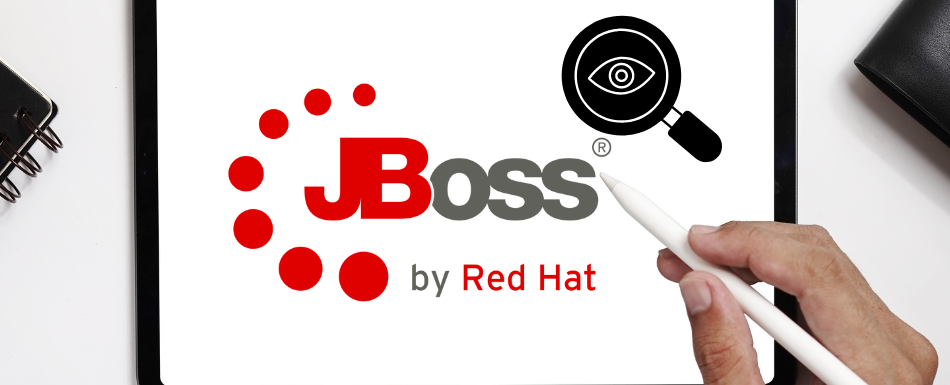Red Hat offers two robust server solutions: JBoss Enterprise Application Platform (JBoss EAP) and WildFly (previously known as JBoss application server).
If you use one of these, you need a JBoss monitoring tool to ensure high reliability, low downtime, and faster execution across your JBoss ecosystem. This way, you can confidently build, run, deploy, and manage enterprise Java applications.
JBoss EAP is a subscription-based platform that works across various environments, including virtual, on-premise, and in the cloud (private, public, and hybrid). Under the hood, it uses the open-source cloud-ready Widfly project that offers powerful management and automation.
In this article, we’ll go through the best JBoss monitoring tools so that you can enjoy unparalleled application performance, security, and resource management.
Let’s get started.
Why Do You Need to Monitor JBoss?
It is essential to monitor JBoss. Without it, your Java application and infrastructure can suffer from low performance, security issues, and poor user experience.
Redhat recommends any tool capable of examining Java Virtual Machines (JVMs). They recommend JConsole as JBoss EAP as it includes a pre-configured wrapper script. Additionally, they also recommend VisualVM.
However, these tools offer basic JVM process monitoring that covers a few aspects, including thread utilization, loaded classes, and memory usage monitoring. On the contrary, you benefit from the need to do no configuration (only if JBoss EAP and monitoring tool are running on the same machine). For remote devices, you need to run setup.
Then, why even bother with a separate third-party monitoring solution?
Well, that’s because third-party solutions offer better features and the capability to monitor every aspect of the JBoss ecosystem, including its components and associated infrastructure.
With JBoss monitoring solutions, teams can proactively monitor all JBoss resources and make sure that performance issues don’t impact end-users.
Additionally, you also need to take budget and monitoring requirements into account.
JBoss Monitoring Tool Features and Capabilities To Look For
The features and capabilities that a JBoss monitoring tool that you should look for include the following:
- It must offer proper application monitoring with web application tracking.
- Access both WildFly and JBoss EAP data.
- Systems resources and Java activity correlation.
- The tool should provide a free trial so that you can try it out before making a purchase.
- Must offer a detailed analysis of performance issues.
- Value for money.
- To identify root issues, the tool must distinguish between container-level, code-level, and JVM-level complications.
- Provide scalability to keep monitoring newly added servers and instances.
- Offer alters to administrators if specific server resources cross a set threshold.
- Ability to observe all or most application errors for admins to react timely.
Also read: Best Open Source Monitoring Software for IT Infrastructure
Now, we will explore JBoss monitoring tools in detail.
SolarWinds Server and Application Monitor
SolarWinds Server and Application Monitor is a popular JBoss monitoring tool. It enables teams to monitor the JBoss application server with visibility covering different health metrics.
Once installed, it automatically discovers and monitors JBoss and any related applications within the environment. It is also smart enough to set up intelligent baselines automatically. It alters the admins if a critical threshold is breached.
Additionally, it lets you manage Java Runtime Environment with out-of-the-box monitoring templates. These templates allow you to monitor vital memory statistics such as memory pending, free memory, garbage collection, etc.
SolarWinds Server and Application Monitor’s key features include the following:
- Monitor server availability
- Monitor key server performance metrics such as latency, packet loss, or response time
- Monitor hardware components and their metrics
- Identify multi-threading issues and other CPU-related metrics
- Troubleshoot Java environment for performance issues
- Get real-time visibility for JBoss services and components
Before buying the monitoring tool, you can try SolarWinds Server and Application Monitor for 30 days.
ManageEngine
ManageEngine Applications Manager (APM) is a top JBoss monitoring tool. And that’s backed by its consecutive 10th appearance in Gartner’s Magic Quadrant in the Application Performance Monitoring and Observability category.
It is an enterprise-ready application that works across on-premise (physical and virtual) and cloud environments. The ManageEngine APM lets teams monitor every JBoss component. For example, you can use it to monitor deployed web applications’ performance, latency, and associated components such as Enterprise Java Beans (EJBs), Java Virtual Machine (JVM), etc.
Overall, ManageEngine APM can monitor, detect and resolve network and resource performance related to infrastructure and applications.
ManageEngine Applications Manager’s key features include:
- Monitor database connectivity and related metrics such as JDBC connection pool size, connections in use, etc.
- Use JMX MBean operations to increase database pool size or restart the JBoss server to solve the memory threshold.
- Troubleshoot Java runtime memory leaks, including Java heap and non-heap memory.
- Do server and database capacity planning by anticipating resource consumption through KPIs monitoring.
- Learn about bottlenecks and do trend analysis with out-of-the-box reports.
You can try out their 30-day trial before making any purchase.
Appdynamics
Appdynamics is a Software-as-a-Service (SaaS) solution that offers full-stack application performance monitoring. It works on cloud and on-premise IT infrastructure environments, allowing you to manage and monitor your JBoss environment.
Out-of-the-box, Appdynamics can monitor business transactions running on JBoss. It auto-discovers and displays AppDynamics Java agents on the node dashboard without the need to do any configuration.
With it, you can stay on top of any critical issues related. It also easily connects to JMX MBeans, which helps view exposed management beans. Finally, it lets you monitor and visualize resource metrics, including CPU, memory, and disk. This way, admins can ensure optimal performance across the Java environment.
Appdynamics’ key features include:
- It provides an in-depth memory view within JBoss and JVM, including garbage collection information, heap, and real-time memory utilizations.
- Provides complete JVM environment visibility, including environmental properties and startup options.
Unlike ManageEngine APM and SolarWinds Server and Application Monitor(SAM), it only offers a 15-day free trial.
DynaTrace
DynaTrace is an AI-powered agent-based JBoss monitoring tool. It excels in observing full-solution stack, including infrastructure, application, and microservice monitoring.
Furthermore, it visualizes end-to-end JBoss service request through its Service flow to give you a complete picture. Here, you can see how individual services execute and their details.
Furthermore, it can dive deep into CPU usage by showcasing CPU consumption in schedulers, background threads, and other JBoss proprietary services. Also, it requires minimal configuration as Dynatrace automatically learns about application architecture details.
DynaTrace key features include the following:
- Get performance metrics, including custom JMX metrics, JVM metrics, all database statements, garbage collection metrics, suspension rate, all requests, and all dependencies.
- No manual configuration is needed.
- Auto-detects new virtual machines and starts monitoring them instantly after deployment.
- Shows process-specific network metrics.
Similar to Appdynamics, it also offers a 15-day free trial. In addition, they also offer a flexible pricing model to choose between annual or perpetual licensing.
Nagios
Nagios is a feature-rich IT infrastructure monitoring and management system that protects critical business processes. It helps teams improve system downtime and server & network health. A proactive approach also improves incident response time.
Unlike our other JBoss monitoring tools, Nagios comes in two packages: Nagios Core and Nagios XI. The Nagios Core is an agent-based free JBoss monitoring tool.
In contrast, the Nagiox XI offers an agent-less GUI-based commercial edition. So, if you’re looking for a more effortless approach, choosing Nagiox XI is not a brainer as it offers a user-friendly GUI.
Its comprehensive monitoring takes care of every infrastructure component. Moreover, its APIs enable the team to monitor in-house and custom applications, systems, and services.
Nagios key features include the following:
- Let you proactive plan for aging infrastructure with trending and capacity planning add-ons.
- Offers alerts to notify technical staff via SMS or email.
- It comes with a web interface for detailed status information.
- Supports multi-tenant capabilities.
- It offers excellent reporting that you can use to ensure SLAs are met.
- Open-source software lets you customize code.
- It comes with extendable architecture that works for in-house applications.
The best way to try Nagios is to test its online demo. You can also use Nagios Core but need technical expertise to set up and run it. If you want to opt for Nagios XI, you can get it in the Standard or Enterprise edition.
SolarWinds Appoptics
SolarWinds Appoptics is a scalable continuous monitoring solution for the JBoss ecosystem, including servers, hosts, applications, containers, and business processes. It supports a full-stack context that works excellent for legacy and future IT implementations.
Out-of-the-box, you’ll find Appoptics easy to set up and use. It provides a user-friendly approach where you get all your JBoss metrics on your AppOptics central dashboard.
Furthermore, you can monitor JBoss server health in real-time with access to detailed visual analytics. This way, you can notice and fix bottlenecks before they cause problems.
Besides memory visualization, you can also monitor threads, allowing you to identify multi-threading issues and resolve CPU-based bottlenecks early.
SolarWinds Appoptics’ key features include:
- Works with a variety of JBoss environments, including 4.x to 7.x.
- Offers an APM dashboard with real-time visual JBoss system feedback.
- Visualize specific memory cache in addition to total memory, garbage collector, free memory, and much more.
- Set threshold-based alters for JBoss monitoring metrics and resolve them before it impacts user experience.
- Troubleshoot poor thread performance through JBoss thread monitoring.
- Fully visualize server performance with a central dashboard and built-in templates.
Appoptics offers a 30-day trial.
OpsView JBoss Monitoring
OpsView is a Business Service Monitoring that lets you monitor JBoss infrastructure. It gives you deep insights into your IT infrastructure. It stays at the top of the market demand by ensuring you meet the SLA requirement for critical business processes.
With it, you can monitor different aspects of the JBoss server, including its process and status health. For example, you can use it to monitor critical JMX values, ensuring that your JBoss environment runs reliability.
OpsView JBoss Monitoring key features include:
- Easy to set up with host template.
- Monitor critical JMX values.
- Ensure that SLA/OLA requirements are met.
They do offer a free trial.
Atatus
Atatus is a full-stack JBoss performance monitoring that offers excellent visibility to enterprise applications and processes. With Atatus, you can monitor different areas, including application monitoring, logs monitoring, infrastructure monitoring, synthetic (uptime) monitoring, and real user monitoring.
For JBoss, you must rely on Atatus APM, which gives you complete real-time application performance visibility. It provides in-depth transaction details, networking details, database monitoring, and more. You can also look for API failures and release tracking for better app releases.
Atatus’s key features include:
- With transaction monitoring, you can track down poor-performing routes using percentiles, histograms, and error rates.
- Get to know the slow SQL queries that are impacting your JBoss application.
- Learn how external services are affecting your application performance.
- Easily find and fix bottlenecks to improve JBoss application performance.
- Receive alters through various mediums, including Teams, Slack, webhooks, emails, etc.
- Gain access to real-time metrics to identify performance issues.
They offer a pay-as-you-go model. You can also try it by requesting a demo or using their free 14-day unlimited free trial.
Eginnovations
Eginnovations lets you understand your JBoss infrastructure with performance visibility across EJB containers, JVM, database connections, external service calls, and more. In short, it offers a full-stack JBoss performance monitoring tool.
By having access to multiple KPIs, you can troubleshoot faster by learning about bottlenecks, slow queries, and error rates. Moreover, you can also use it to gain code-level visibility, giving you the tools to optimize application performance. This way, you can change the application code causing slow business transactions.
Eginnovations’ key features include:
- Track every JVM aspect and its related performance.
- Works out of the box for JBoss EAP and WildFly.
- Measure every EJB metric, including execution, creation, removal, and invocation.
You can try out Eginnovations for 30 days.
Final Words
JBoss monitoring tool necessary for any business developing Java applications. Doing so avoids reliability issues while keeping performance optimal, resulting in an excellent user experience. Our list covers the best JBoss monitoring tools, and you’re free to choose the one that suits your needs.
Next, check out JBoss 7 access log configuration.



